How to Build an Artist Resume in 4 Simple Steps

If you’re ready to take the leap into establishing a career as an artist, then you need consider some essential steps first. These include defining your artist statement, establishing your brand and searching for gallery representation, just to name a few.
All of these factors can help you build your artist resume, which is crucial for showing off your experience, awards and accolades. Below, artist and gallery owner Cecilia Murray shares a few key tips for creating a resume and establishing a stronger presence as an artist. Enjoy!

Creating an Artist Resume Means Expanding Your Artistic Presence
When considering new artists for my gallery in Charleston, South Carolina, it’s important that I see an extensive artist resume that stands behind a body of work. Building your artistic presence and resume may seem intimidating at first, but it can be an exciting and rewarding process that can lead to gallery representation.
Below are four simple ways for expanding your presence as an artist while also building a more well-defined artist resume. These guidelines will help jump-start your art career and impress gallery owners and clients alike.
1. Enter Juried Shows and Art Competitions
To build your portfolio and position in the art world, it’s vital to take the plunge and enter juried shows and competitions. Many pastel artists enter the myriad pastel society shows that exist here in North America, across the U.S. and Canada — a good first step.
The next step is to expand your search to include all-media shows. The American Impressionist Society, the Salmagundi Club in New York and many other venues offer opportunities for artists throughout the year. There are specialized shows for portrait painters, marine painters and shows for small works as well.
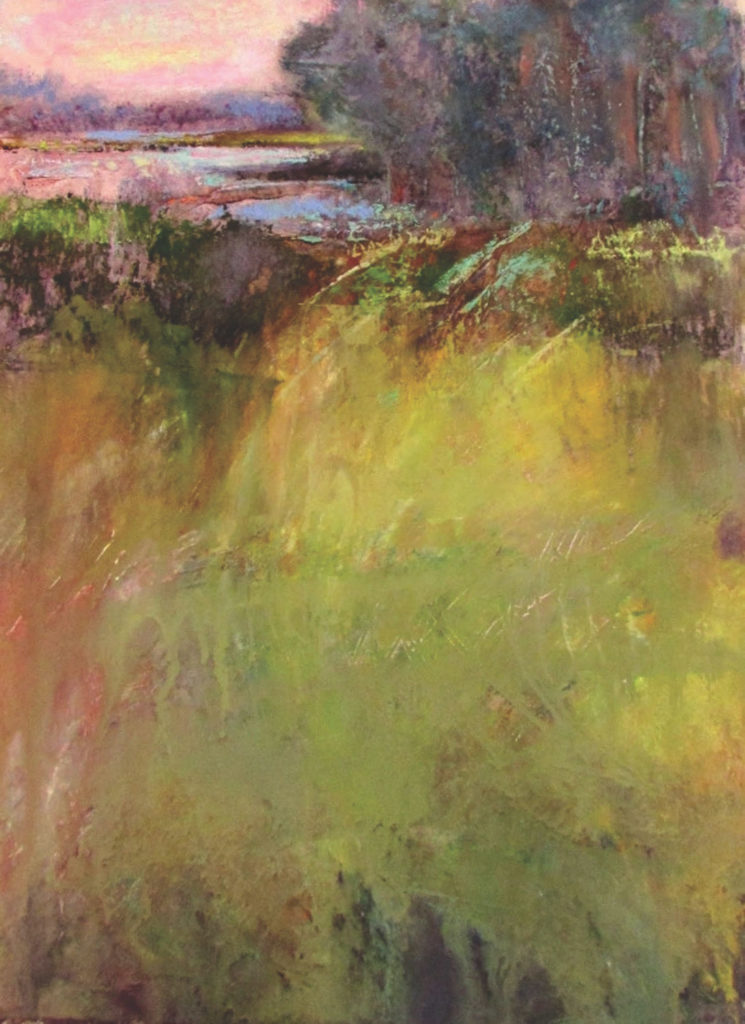
You can easily find opportunities by searching the web for open calls. A few examples include onlinejuriedshows.com, callforentry.org and artshow.com. Researching the themes of upcoming shows may even inspire a new direction in your work. So keep an open mind regarding subject matter that may be different from what you currently do.
When considering where to spend your money on entry fees, research the venue where the show will take place, the judge of entry and the judge of awards. If the judge of entry is a curator for a museum, for example, research the look and feel of the work currently in the museum. This will give you an idea of the work that particular judge may be drawn to. If you believe your work is a good fit with the show’s theme, the venue location and the judge, by all means, throw your hat in the ring.
Entering art shows hosted by galleries is also an excellent way to expand your artistic presence. Subject matter, theme and presentation all come into play in a gallery show. While acceptance into a show isn’t a guarantee that you’ll eventually be represented there, it’s certainly a good investment of your time. The gallery owner will now be familiar with your name, bio, style and price point.
If you receive a “not accepted” reply to your entry, don’t be discouraged. I have had a painting that wasn’t accepted — I don’t use the term “rejected” — from two shows, before the work was granted entry into a reputable national pastel show, where it received an award.
If your work isn’t accepted into a show, and you’re able, take the time to attend the opening or look at the show galleries when avaible online. Try to be objective about the accepted paintings. You might find that you can learn something new regarding subject matter, quality of light, composition, color palette and presentation.
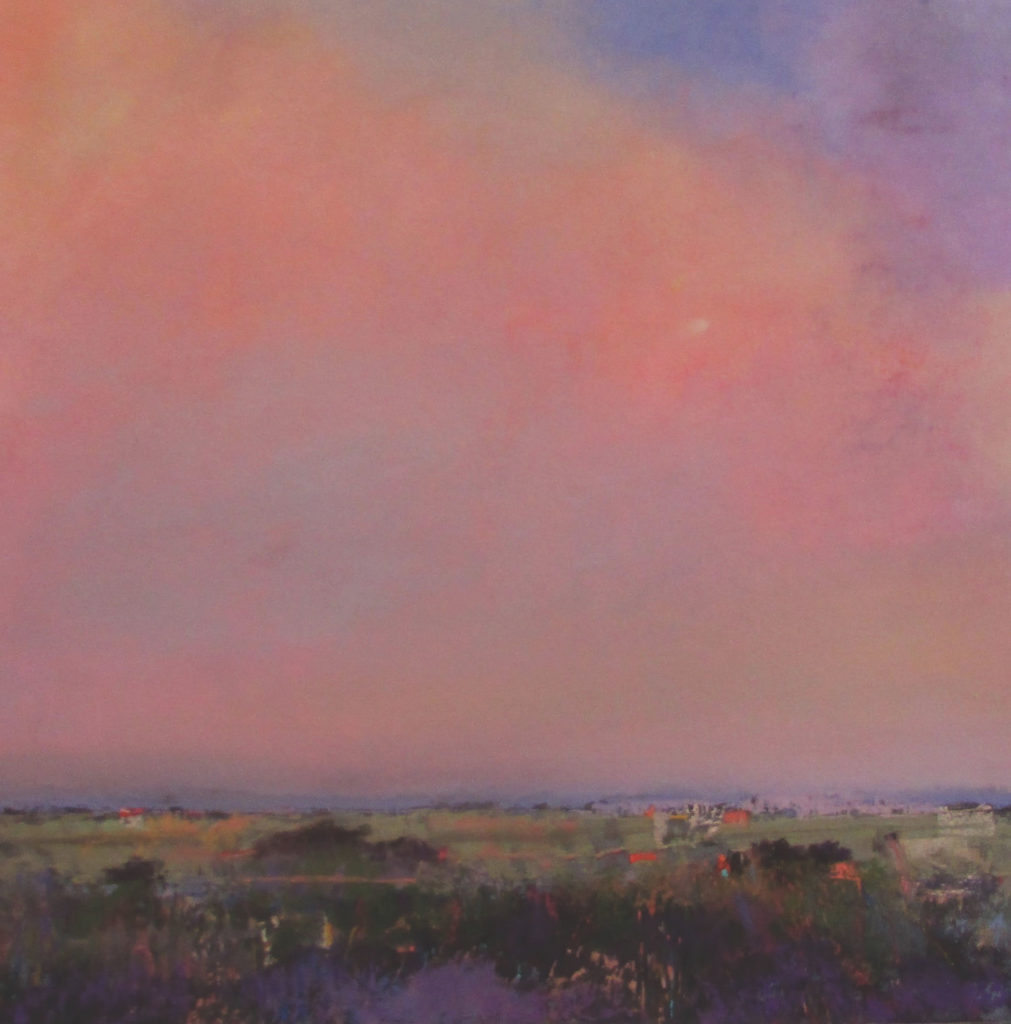
Bonus Tip: Online Competitions
If there aren’t any physical shows in your region, or you want to expand into art competitions that aren’t dependent on location, a great way to gain more exposure is by entering online shows and art competitions.
Online competitions can range in complexity, prizes and recognition, as well as costs and fees. Be sure to do your research first to make sure the online competition you are entering is reputable.
Here at Artists Network, we offer a free resource filled with tips for entering art competitions and contests (which you can download here). Also, be sure to check out the wide range of art competitions we offer to find a great fit for your art.
2. Build Your Artistic Presence
Once you can demonstrate a strong, cohesive body of work, try approaching various venues to host a show of your paintings. Many art societies have relationships with libraries, town halls, university halls, etc., that may be open to hosting a display of your work.
Consider nontraditional venues with heavy foot traffic: Real estate offices, doctors’ offices, restaurants and coffee shops are all good options. A solo show is worth noting on your bio, regardless of location.
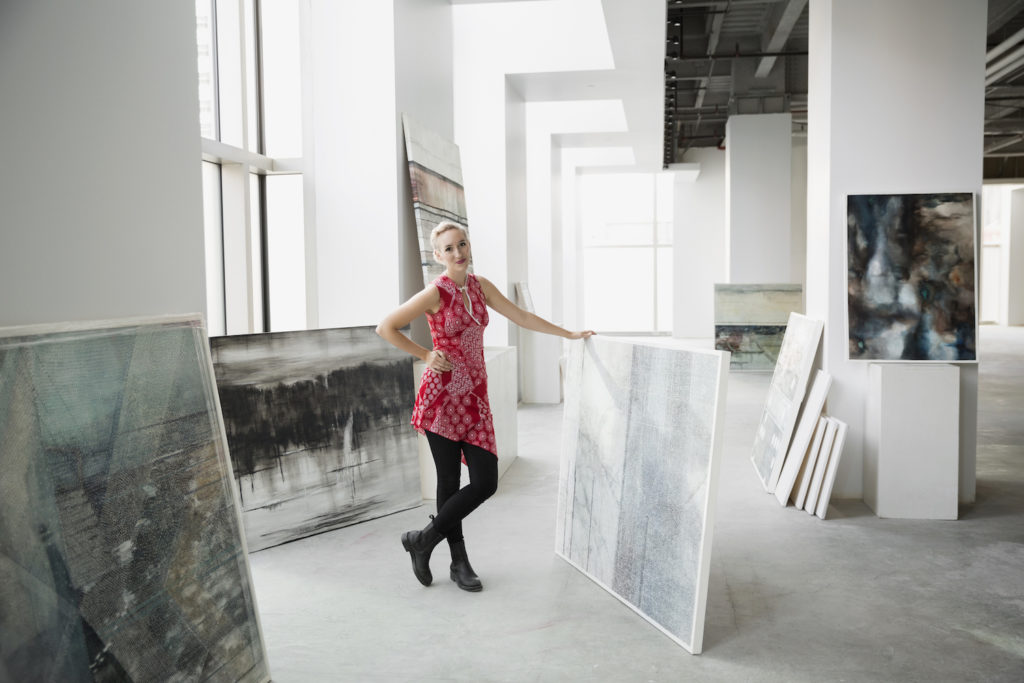
3. Brag a Little
Now that you’ve had a show, get the word out about your success! Social platforms like Facebook and Instagram, and your own website are all great places to share your news.
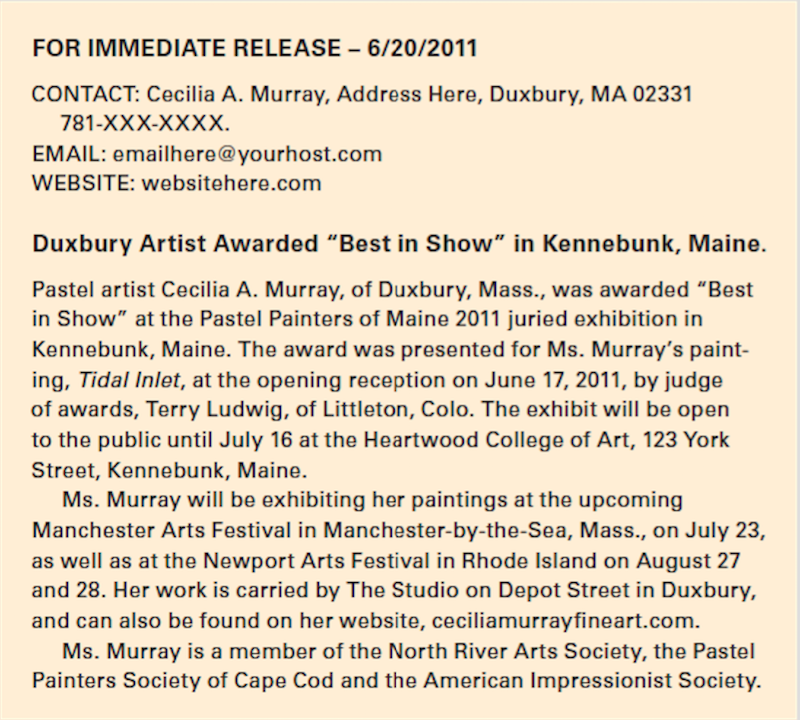
I also highly recommend writing a press release about your work. Submit it to every newspaper and magazine in your area (see sample to the left). With a bit of research, you easily can find the name of the reporter or editor whom you wish to contact.
Many publications, both online and print, often look for interesting content. And if you’re successful, your work may catch the eye of a gallery owner or new collector.
To learn how to present your information, do a quick online search for “how to write a press release,” and follow the formats you find. A good rule of thumb is to write the most important points in the first two lines of the press release.
Attach a high-resolution image of your painting with the press release; include the medium and dimensions. Write a personal note to the editor, and be certain your contact information is clear.
You may be wondering if you can still write a press release without having had a solo show. Yes! Think about what makes you unique as an artist.
Did you recently change careers? Is your art influenced by a life change? For instance, did you move to a new part of the country, send your last child off to college or pick up painting for the first time?
Perhaps you were a doctor, and now you’re a full-time artist — or maybe you still practice both. Your message as an artist could make for very interesting content. Share your story, and submit it for publication. Nothing ventured, nothing gained.
4. Stay in Forward Motion
Don’t forget to share your work. As you think about the steps required to build your resume, consider all of the opportunities to grow as an artist.
Enter juried shows and art competitions. Share news of your success online and in print media. And, above all, don’t let minor bumps in the road stop you from moving forward on your personal creative journey.
***
A version of this article, written by Cecilia Murray, was first featured in Pastel Journal. To subscribe to the magazine, click here.
And, if you’re ready to start adding some pastel awards and recognition to your own artist resume, learn all about Pastel Journal’s Pastel 100 Competition here.
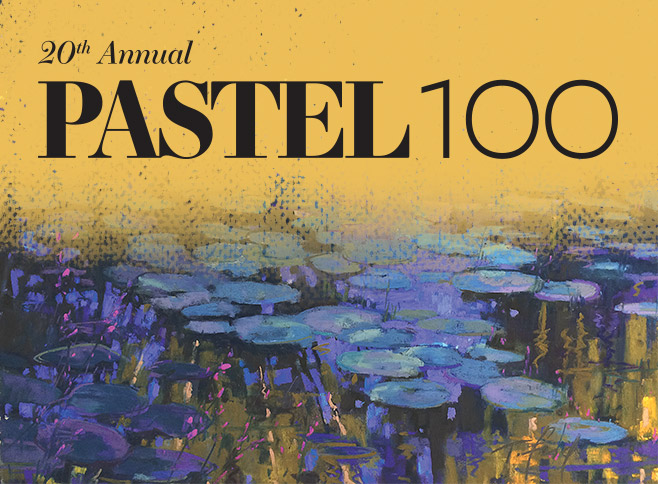
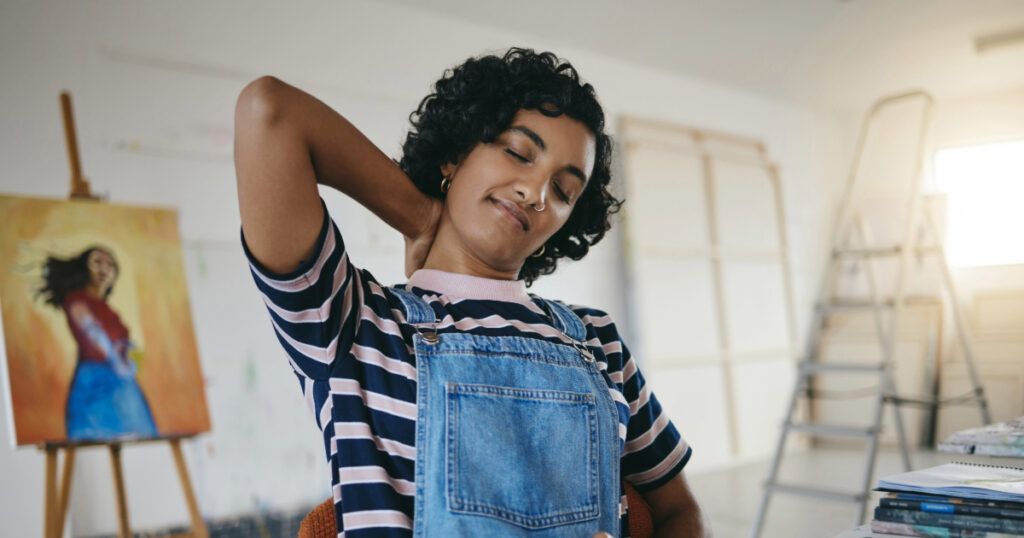
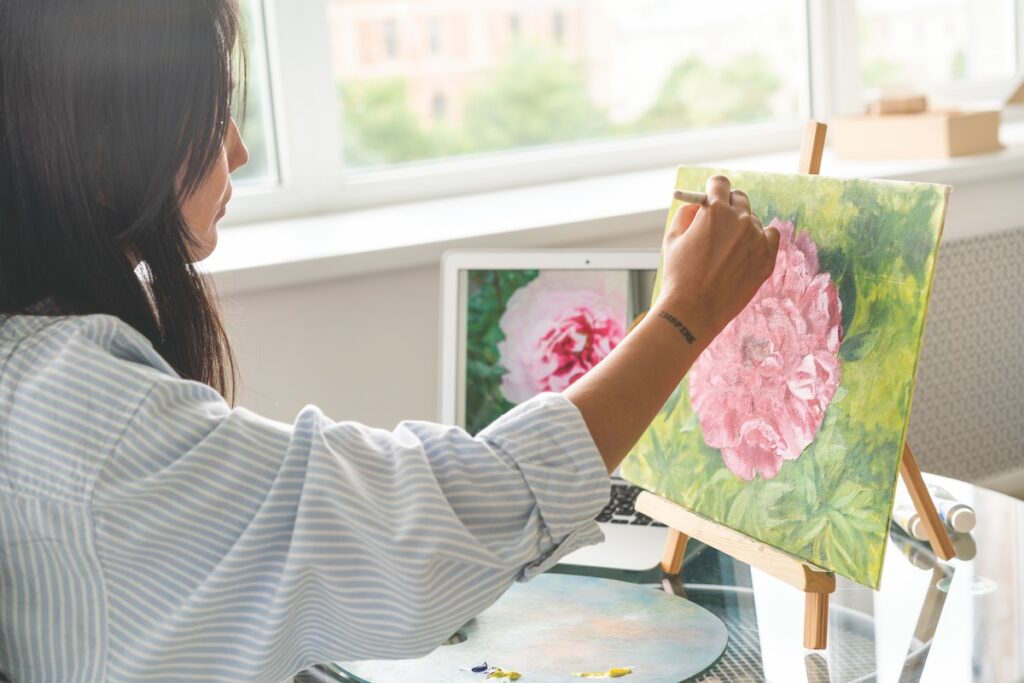
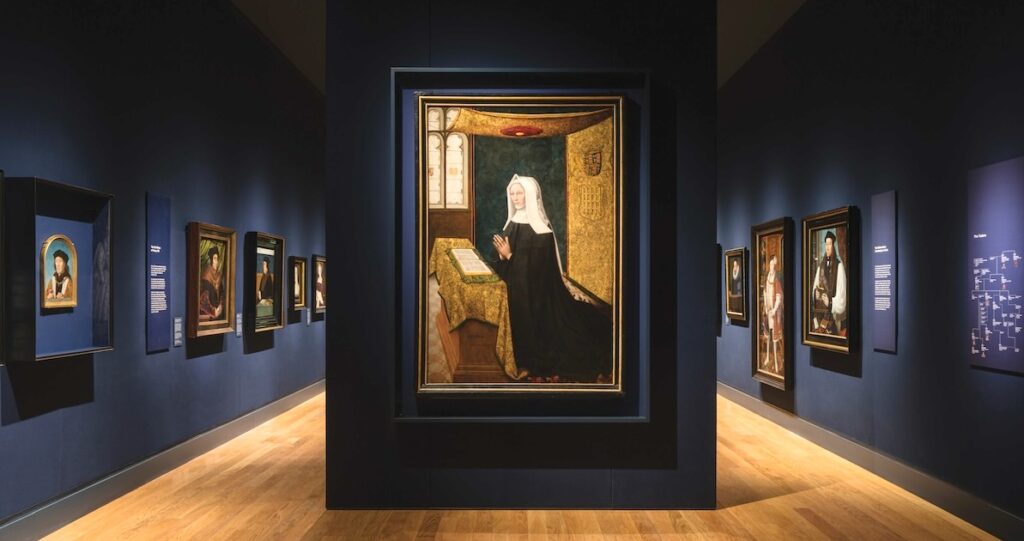
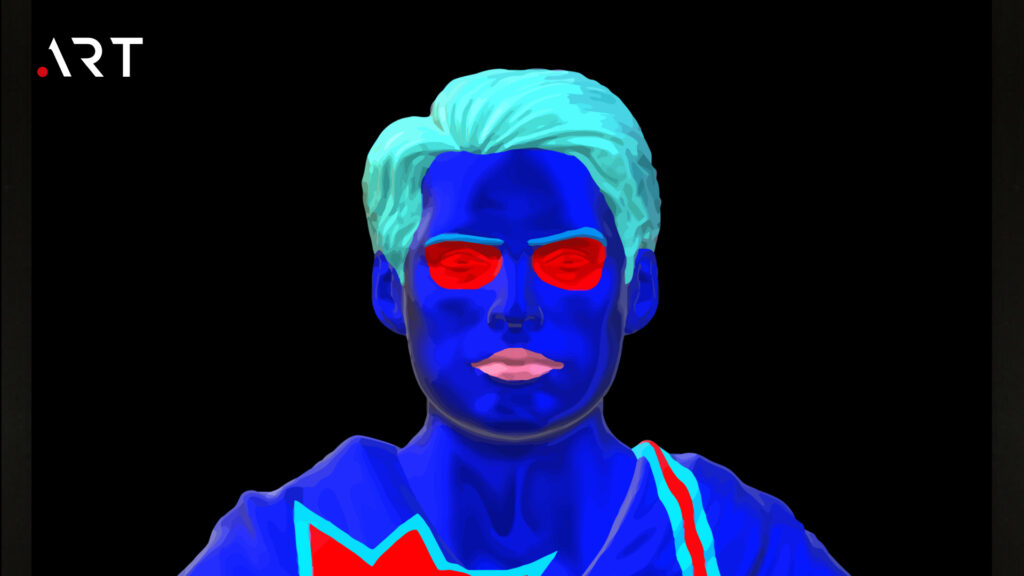
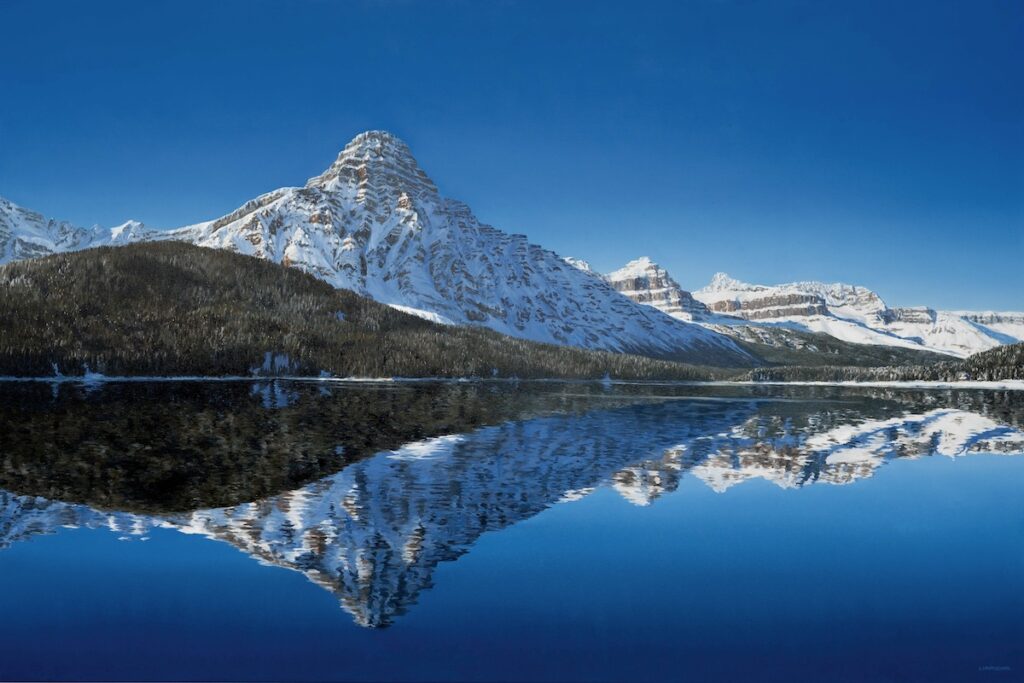
Have a technical question?
Contact UsJoin the Conversation!